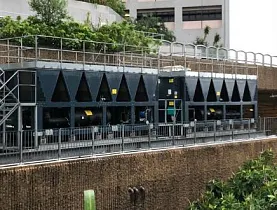


The Salam Centre for Cardiac Surgery, opened in 2007 near Khartoum is the hub of EMERGENCY’s Regional Programme for Cardiac Surgery, and offers free-of-charge and high-quality assistance to patients with congenital and acquired diseases secondary to rheumatic fever. Rheumatic heart disease has a high incidence in sub-Saharan Africa, and it is particularly high among young people. The Centre occupies 12,000 m² and is equipped with 3 operating theatres, 63 beds, an emergency room, various outpatient clinics and laboratories, a guesthouse for relatives, and a prayer and meditation pavilion.
Due to Khartoum’s desert climate, with temperatures often reaching up to 50°C in the summer, the Salam Centre needed innovative solutions to minimise energy consumption, provide state-of-the-art medical care, and achieve the best environment for patients' treatment and recovery, ideally with indoor temperatures of 18-24°C. Thus, Innovative cooling, insulation and filtration technologies were implemented. the Salam Centre’s external walls are built with multiple bricks’ layers interspersed with panelled, insulated air chambers, for a total thickness of about 60 cm. The windows are equipped with double glasses covered with sun-screening films.
While the architectural considerations contribute to shielding the centre from the sun and the heat, an innovative cooling system was needed. When it came time to update the previous system in 2018, EMERGENCY chose a Climaveneta branded NECS/CA/S 2116 chiller with a cooling capacity of 592 kW. The unit has a multi-circuit chilling section designed to ensure maximum efficiency at both full and partial loads, assuring uninterrupted service in the event one of the circuits fails. The electricity required by the chiller is provided by a system employing 288 vacuum-sealed solar collectors (for a total surface of 900 m²) which produces 3,600 kW/h with zero CO2 emissions, the energy needed would be equivalent to burning 335 kg of gasoline per hour. Seeing as gasoline is scarce and extremely expensive in Sudan, this cooling system provides significant economic savings without any compromise in efficiency.